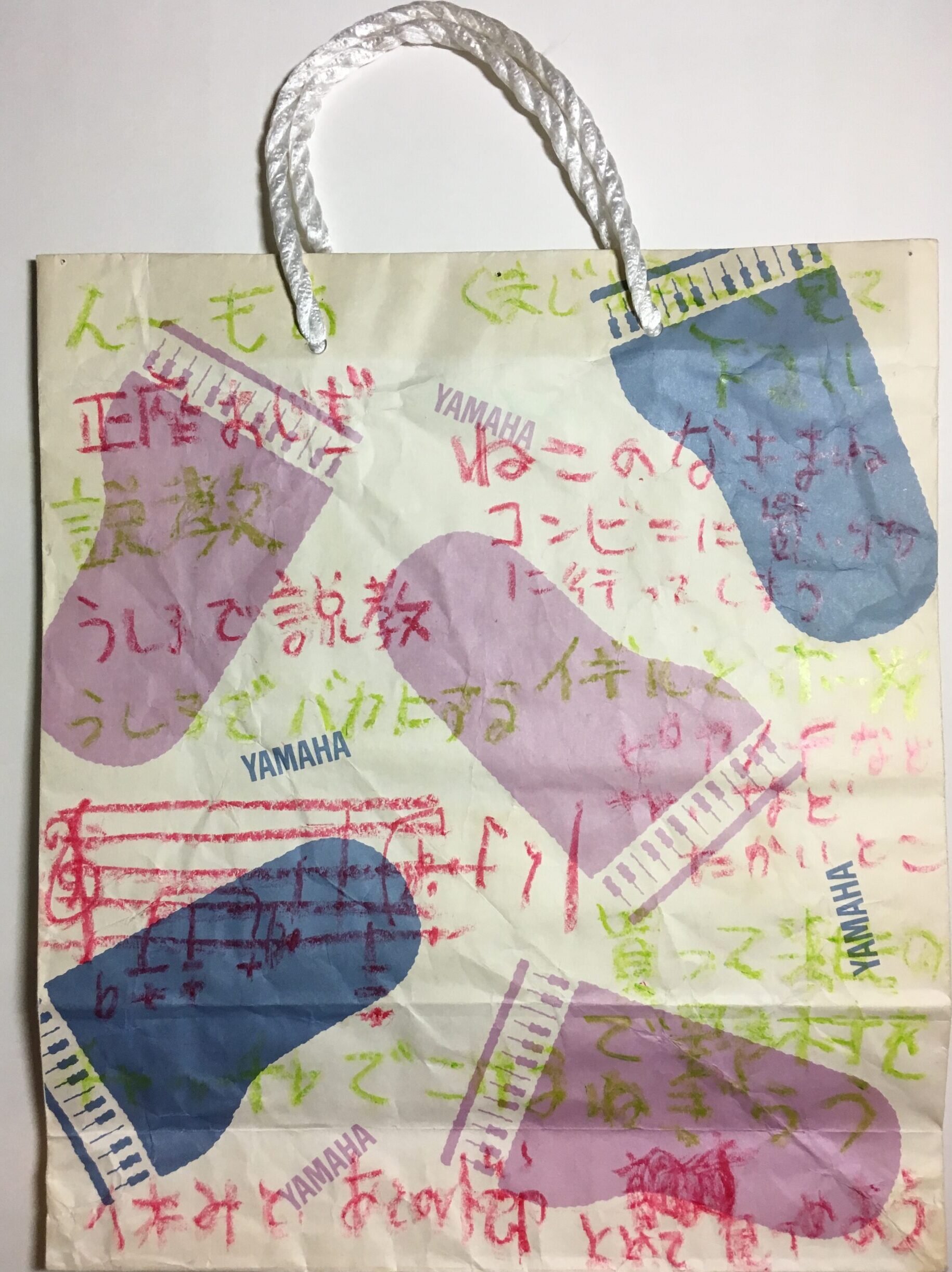
しょうぎ作曲 / SHOGI COMPOSITION
1999年に考案した共同作曲法
2001年、東京オペラシティアートギャラリーでの「出会い」展で楽譜展示
2002年に佐倉市立美術館で展示
2004年にYCAM(山口情報芸術センター)で開催の「しょうぎ交響曲の誕生 しょうぎ作曲の現在とオーケストラの新潮流」
2009年に、ニューヨークで出版された「Notations 21」に紹介され、楽譜がアメリカ、ヨーロッパなど巡回展示。
2019年、[ロンドン]のFive Years Galleryで楽譜展示
SHOGI COMPOSITION (1999) NOMURA MAKOTO
“SHOGI COMPOSITION” is a kind of recipe for collaborative composition among various people with different musical backgrounds. It is just like playing cards around a table. A few players around a table compose short passages one after another instead of playing cards. Please enjoy it and compose new interesting music!
1. The Number of Players
In order to do SHOGI COMPOSITION at least 2 players are required. Although you can do it with 10 or more players theoretically, with the more players you will have to prepare the greater amount of time. Practically speaking, the proper number of its players can be 3,4 or 5. Each player is supposed to bring his/her musical instruments, sound objects etc.
2. Useless Paper etc. and Colored Pens/Pencils
In order to do SHOGI COMPOSITION you have to prepare paper to write music down. Of course you don’t have to prepare 5-lined-music-paper because in SHOGI COMPOSITION each player is allowed to write music down in his/her own way. You can use drawing paper, useless calendars, useless posters and so on. You also have to prepare colored pens/pencils. Each player is supposed to choose one color and use always the same color. When you complete the composition, the paper will be the artistic picture as well as music score.
3. The Process
At first you have to decide who will start, and which way to go round the circle. Then the first player starts to compose a short musical phrase on his/her own instrument(s). When s/he completes his/her phrase, s/he writes it down on the paper in his/her way with the colored pen/pencil. Please notate it as you will understand it later. As soon as s/he writes it down, s/he hands the paper to the next player, starts to play it and keeps repeating it until his/her turn comes around again.Similarly the next player makes another musical phrase which goes well with the first phrase, writes it down in his/her own way next to the first phrase on the paper, hands the paper to his/her next player, and keep repeating the phrase until his/her turn comes around again.
Similarly keep this process. Finally the last player writes his/her own phrase, s/he hands the paper to the first player. Then the first player stops playing, makes a new phrase which goes well with what other players are playing, writes it down on the paper, hands the paper to the next player, and keep repeating the new phrase until his/her turn comes around again.
Similarly continue this process. Each player’s notation doesn’t have to be understandable for everyone. If each player understands his/her own notation and replays it later correctly, any notation can be welcome.
Each phrase doesn’t have to be the same size. For example after the first player composes 4-bar-phrase of 4/4 meter, the second player can compose 2-bar-phrase of 7/8 or 10-second-graphic-notated-phrase.
Continue this process without any break until you can’t find any space to write down on the paper. When the paper is full, composition is finished. Don’t stop the process until the paper is full.
If you can’t help going to toilet, wait for your turn to compose. During your turn you may go to toilet quickly. For musical reason having a break is absolutely bad.
4. Performance
For the performance, at first the first player starts repeating his/her first phrase and hands the paper to the next player. Then the next player starts playing his/her first phrase and hands the paper to his/her next player. Similarly keep the process until everyone plays the every phrase. Consult and decide title how to finish the piece with each other before the performance. In order to play fluently practice the piece you composed together by SHOGI COMPOSITION many times before your performance. For example it takes 2 hours for composition and only 10 minutes for performance. You may photocopy the paper for each performer.
